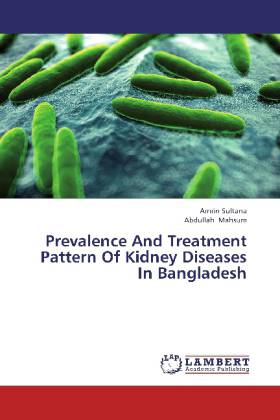
- Afhalen na 1 uur in een winkel met voorraad
- Gratis thuislevering in België vanaf € 30
- Ruim aanbod met 7 miljoen producten
- Afhalen na 1 uur in een winkel met voorraad
- Gratis thuislevering in België vanaf € 30
- Ruim aanbod met 7 miljoen producten
Zoeken
Prevalence And Treatment Pattern Of Kidney Diseases In Bangladesh
Amrin Sultana, Abdullah Mahsum
Paperback | Engels
€ 64,45
+ 128 punten
Omschrijving
This study represents the pattern of kidney disease and their treatment in tertiary care hospitals in Bangladesh. To conduct the study i consulted the doctors nephrology department of National Institute of Kidney Diseases and Urology hospital to select patients for data collection.120 patients were selected, among which 68 were male and 52 were female. I found that, most of the kidney patient in acute &chronic renal diseases as a public health problem epidemiology, social, and economic implications. The impact of kidney disease on the global burden of diseases is probably underestimated by current methods of evaluation. However, kidney diseases are emerging as a major health problem. I also found that most of kidney patients were present with some other complication, of them hypertension renal disease, retinopathy neuropathy were the most common clinical complication of kidney disease. There is a paucity of data regarding the prevalence and clinical consequences of the chronic renal failure, maintenance dialysis, and renal transplant population in our country. The attendant complications of malaise wasting, anemia, and decreased immunity may predispose these patients to infection.
Specificaties
Betrokkenen
- Auteur(s):
- Uitgeverij:
Inhoud
- Aantal bladzijden:
- 108
- Taal:
- Engels
Eigenschappen
- Productcode (EAN):
- 9783659318214
- Verschijningsdatum:
- 4/01/2013
- Uitvoering:
- Paperback
- Afmetingen:
- 150 mm x 220 mm
- Gewicht:
- 168 g

Alleen bij Standaard Boekhandel
+ 128 punten op je klantenkaart van Standaard Boekhandel
Beoordelingen
We publiceren alleen reviews die voldoen aan de voorwaarden voor reviews. Bekijk onze voorwaarden voor reviews.








